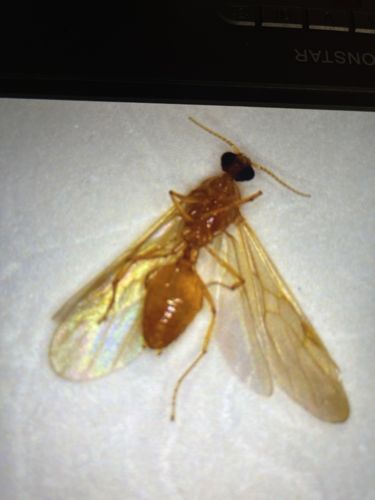Winged Ant (Alate)
Scientific Name: Various species within Formicidae (this is a reproductive individual, likely a queen or male, not a specific species)
Order & Family: Order: Hymenoptera, Family: Formicidae
Size: Depending on the species, winged ants can range from a few millimeters to over a centimeter in length. The individual shown appears to be in the range of 5-10 mm.

Natural Habitat
Ants are found in almost all terrestrial habitats worldwide, from forests and grasslands to deserts and urban environments. Nests can be in soil, under rocks, in wood, or in human structures.
Diet & Feeding
Ants have diverse diets depending on the species. Many are omnivorous, feeding on nectar, honeydew from aphids, seeds, fungi, and other insects (both living and dead).
Behavior Patterns
Winged ants (alates) emerge from nests for mating flights, often during warm and humid conditions (nuptial flights). After mating, the males die, and the queens shed their wings to start new colonies. The workers are responsible for foraging, nest maintenance, and caring for the young.
Risks & Benefits
Risks: Some ant species can be nuisance pests, infesting homes and food sources. A few species (e.g., fire ants) can deliver painful stings. Benefits: Ants play a crucial role in ecosystems as decomposers, aerating soil, predating on other insects (including pests), and dispersing seeds.
Identified on: 9/3/2025